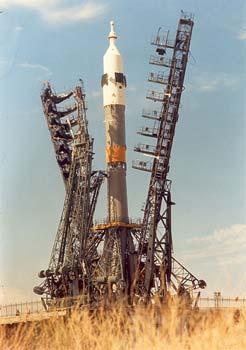What's rocket vehicle
2009-05-20 15:25 BJT
A rocket or rocket vehicle is a missile, aircraft or other vehicle which obtains thrust by the reaction of the rocket to the ejection of fast moving fluid exhaust from a rocket engine. Chemical rockets create their exhaust by the combustion of rocket propellant. The action of the exhaust against the inside of combustion chambers and expansion nozzles accelerates the gas to extremely high speed and exerts a large reactive thrust on the rocket.
 |
| A Soyuz rocket, at Baikonur launch pad. |
The history of rockets goes back to at least the 13th century, and military and recreational display use dates from that time.[1] Widespread military, scientific, and industrial use did not occur until the 20th century, when rocketry was the enabling technology of the Space Age, with man visiting the moon.
Rockets are used for fireworks and weaponry, ejection seats and launch vehicles for artificial satellites, human spaceflight and exploration of other planets. While inefficient for low speed use, they are, compared to other propulsion systems, very lightweight and powerful, capable of generating large accelerations and of attaining extremely high speeds with reasonable efficiency.
Chemical rockets store a large amount of energy in an easily-released form, and can be very dangerous. However, careful design, testing, construction, and use minimizes risks.

 Mail
Mail Share
Share Print
Print


 Video
Video









 2009 China Central Television. All Rights Reserved
2009 China Central Television. All Rights Reserved